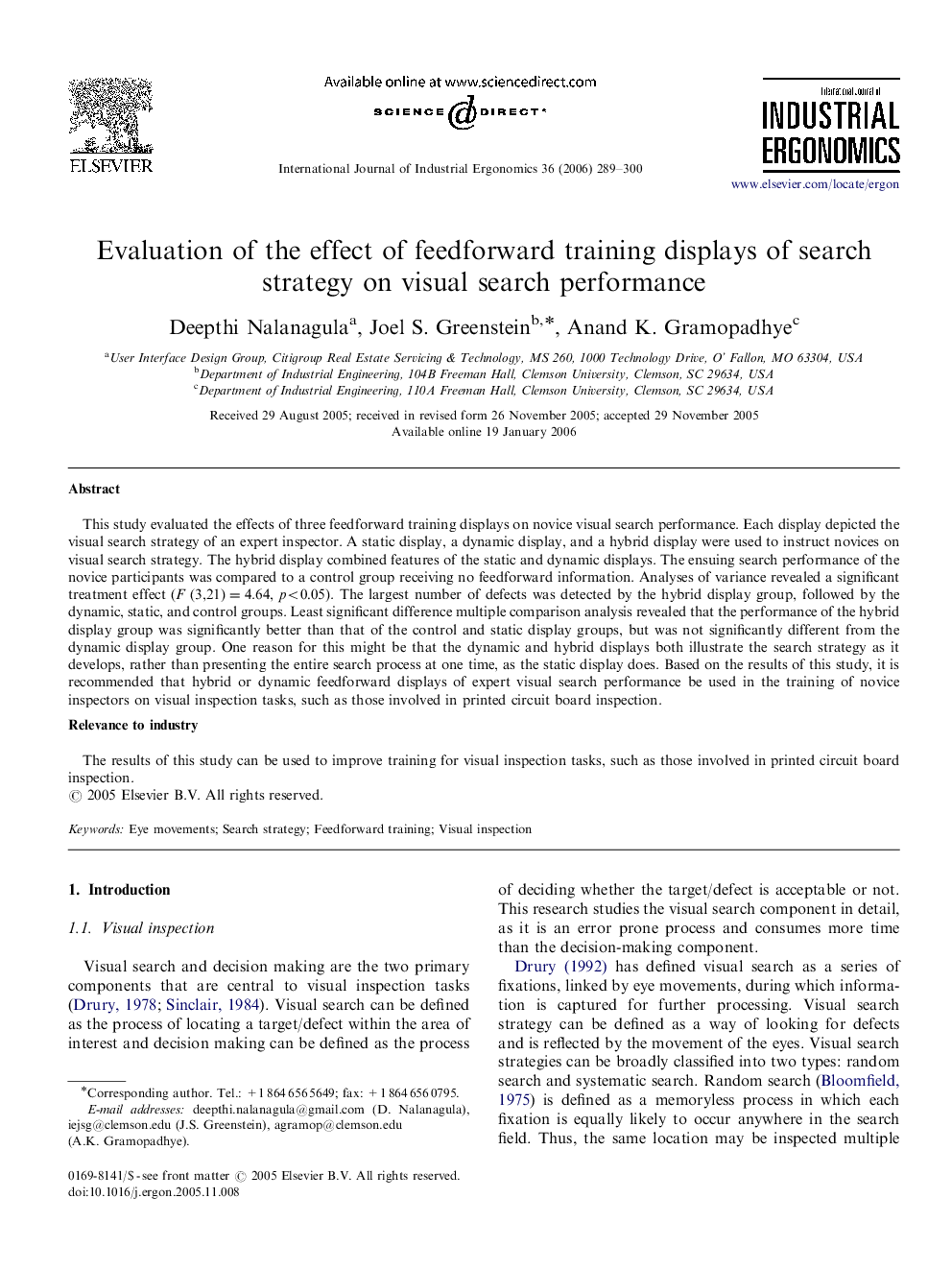| Article ID | Journal | Published Year | Pages | File Type |
|---|---|---|---|---|
| 1096413 | International Journal of Industrial Ergonomics | 2006 | 12 Pages |
This study evaluated the effects of three feedforward training displays on novice visual search performance. Each display depicted the visual search strategy of an expert inspector. A static display, a dynamic display, and a hybrid display were used to instruct novices on visual search strategy. The hybrid display combined features of the static and dynamic displays. The ensuing search performance of the novice participants was compared to a control group receiving no feedforward information. Analyses of variance revealed a significant treatment effect (F (3,21)=4.64, p<0.05p<0.05). The largest number of defects was detected by the hybrid display group, followed by the dynamic, static, and control groups. Least significant difference multiple comparison analysis revealed that the performance of the hybrid display group was significantly better than that of the control and static display groups, but was not significantly different from the dynamic display group. One reason for this might be that the dynamic and hybrid displays both illustrate the search strategy as it develops, rather than presenting the entire search process at one time, as the static display does. Based on the results of this study, it is recommended that hybrid or dynamic feedforward displays of expert visual search performance be used in the training of novice inspectors on visual inspection tasks, such as those involved in printed circuit board inspection.Relevance to industryThe results of this study can be used to improve training for visual inspection tasks, such as those involved in printed circuit board inspection.
